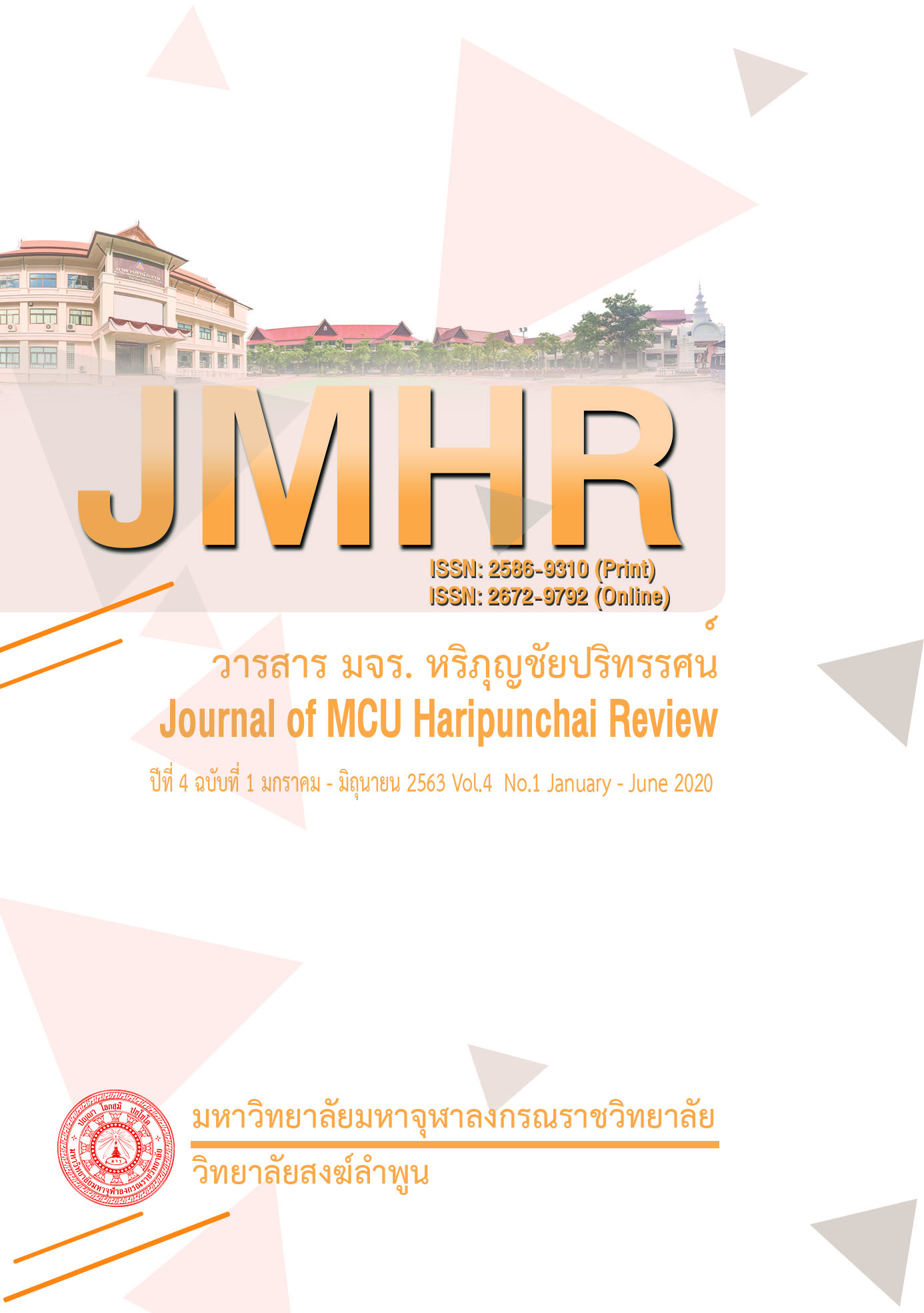Factors Affecting Levels of Digital Literacy on Smartphone Devices of the Elderly in Bang Khae District, Bangkok
Main Article Content
Abstract
This research aimed to explore levels of digital literacy on smartphone devices and factors affecting the levels of digital literacy of the elderly in Bang Khae district, Bangkok. Population were the elderly in Bang Khae district aged between 60 – 79 years total amount of 30,888. The 395 samples were identified based on the Taro Yamane method. In fact, 302 samples (76.5%) were voluntary joined the study. Research instrument was a digital literacy test comprised of 45 questions aimed to explore levels of digital literacy in nine aspects as follows: (1) rights and responsibility (2) media accessibility (3) digital communication (4) e-safety (5) media understanding (6) courtesy in digital society (7) e-Healthy (8) digital commerce and (9) digital law. The test was verified its quality by educational experts by using Index of Objective-Congruence (IOC) then tried-out before its implementation. Data were analyzed by descriptive and inferential statistics.
The results are as follows.
(1) More than half of the elderly (51.7%) gained digital literacy at ‘high’ level followed by a group of 23.4% which gained ‘intermediate’ level. Considering of each aspect of digital literacy, when the full score is 5.00, the results showed that the highest mean was ‘courtesy in digital society’ (=4.01) whilst the lowest mean was ‘digital commerce’ (=3.10).
(2) The elderly had more or less misunderstanding towards ‘rights and responsibility’ as well as being less proper care in using smartphone, behaving smartphone addiction, and lacked knowledge and skills about how to verify product’s qualifications before making online payment.
(3) Gender and age were not factors that affect the level of digital literacy of the elderly. However, ‘period of smartphone possession’ and ‘average time spent with smartphone’ did affected levels of digital literacy of the elderly statistically significant at .05 level.
Article Details
References
วารสารธรรมศาสตร์, 38(1), 20-33.
กรมกิจการผู้สูงอายุ. (20 มีนาคม 2562). สถิติผู้สูงอายุ. [ออนไลน์]. แหล่งที่มา : http://www.dop.go.th
ณัฐนันท์ ศิริเจริญ, กมลรัฐ อินทรทัศน์, และ ปิยฉัตร ล้อมชวการ. (2558). “รูปแบบการสื่อสารเพื่อการรู้เท่าทันสื่อและสารสนเทศจากสื่ออินเทอร์เน็ตของเยาวชนไทย”. วารสารศรีปทุมปริทัศน์ ฉบับมนุษยศาสตร์และสังคมศาสตร์, 15(1): 46-57.
ไทยรัฐ. (20 มีนาคม 2561). เล่ห์แก๊งคอลฯ รูปแบบใหม่ สุดฮิตโทรหาผู้สูงอายุอยู่บ้านคนเดียว. [ออนไลน์]. แหล่งที่มา : http://www.thairath.co.th
สมศักดิ์ อรรฆศิลป์. (3 พฤศจิกายน 2560). สถาบันเวชศาสตร์ฯ ผู้สูงอายุ เปิดศูนย์บริการดูแลผู้สูงอายุไทย. [Online]. แหล่งที่มา : http://www.dms.moph.go.th
สิทธิชัย คูเจริญสิน. (2559). “การศึกษาพฤติกรรมการใช้สื่อสังคมของผู้สูงอายุที่พักอาศัยในเขตอำเภอเมือง จังหวัดชลบุรี” (วิทยานิพนธ์การศึกษามหาบัณฑิต). ชลบุรี: มหาวิทยาลัยบูรพา.
สุรีย์ บุญญานุพงศ์. (2534). เยาวชนและคนหนุ่มสาวยุคปัจจุบันในทัศนะของผู้สูงอายุ. เชียงใหม่:
สถาบันวิจัยสังคม มหาวิทยาลัยเชียงใหม่.
สำนักงานคณะกรรมการพัฒนาการเศรษฐกิจและสังคมแห่งชาติ. (2560). สศช. แถลงรายงานภาวะสังคมไทย
ไตรมาสที่ 3 ปี พ.ศ. 2560. [Online]. แหล่งที่มา : https://www.nesdb.go.th
สำนักงานพัฒนาวิทยาศาสตร์และเทคโนโลยีแห่งชาติ. (2559). การรู้ดิจิทัล. (Online). https://www.nstda.or.th, 19 กรกฎาคม 2562.
สำนักงานราชบัณฑิตยสภา. (2562). พจนานุกรมศัพท์ศึกษาศาสตร์ร่วมสมัย ชุดความฉลาดรู้ (literacy). กรุงเทพฯ: สำนักงานราชบัณฑิตยสภา.
Best, J. W. (1977). Research in Education. Englewood Cliffs, NJ: Prentice Hall.
Wan, Y., Nakayama, M., & Sutcliffe, N. (2012). “The impact of age and shopping experiences on the classification of search, experience, and credence goods in online shopping”. Information Systems and e-Business Management, 10(1): 135-148.
Yamane, T. (1967). Statistics: An Introductory Analysis. 2nd Edition. New York: Harper and Row.
Zaidi, A. (2015). Ageing and Development. Brussels: United Nations Development Programme.


